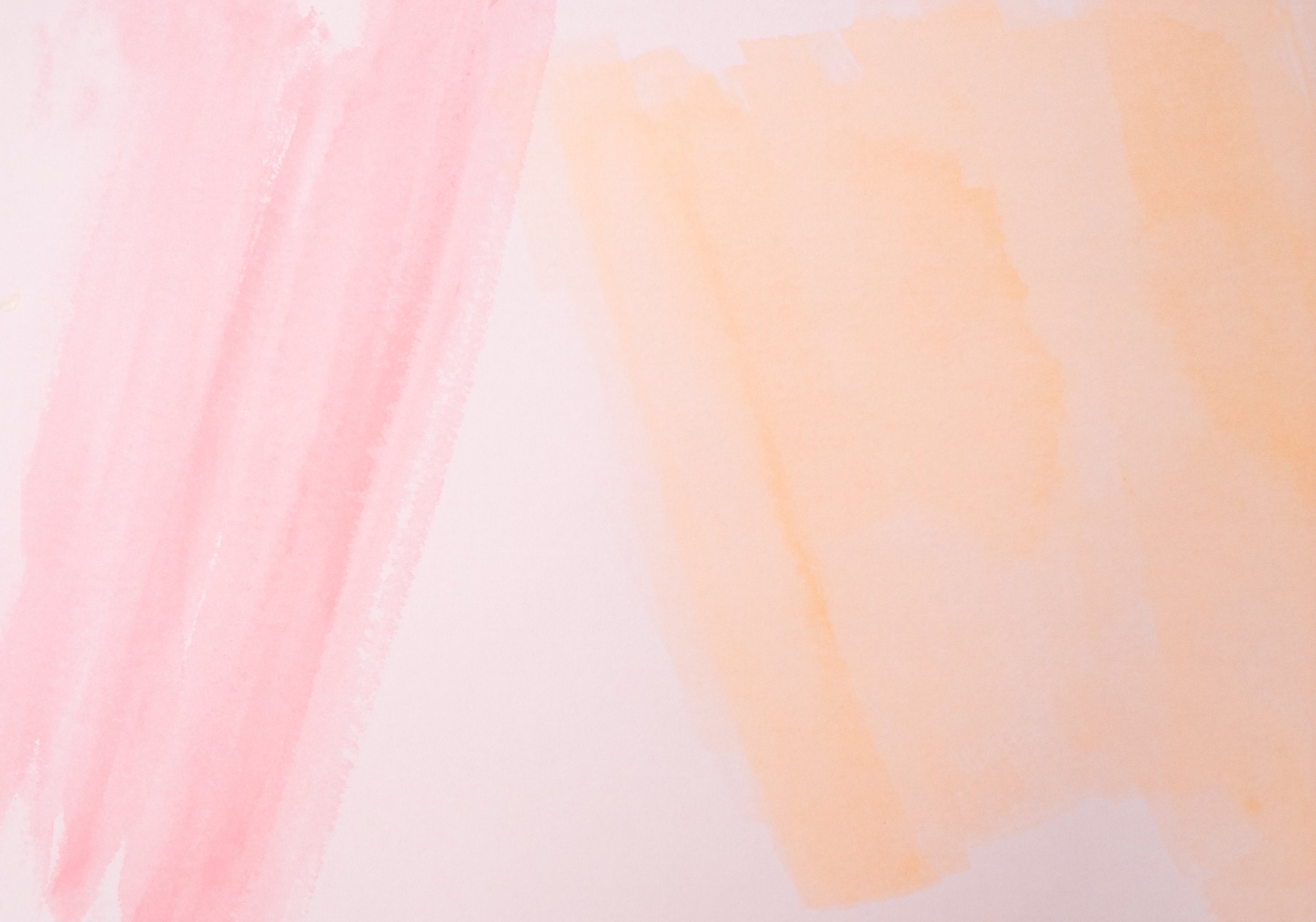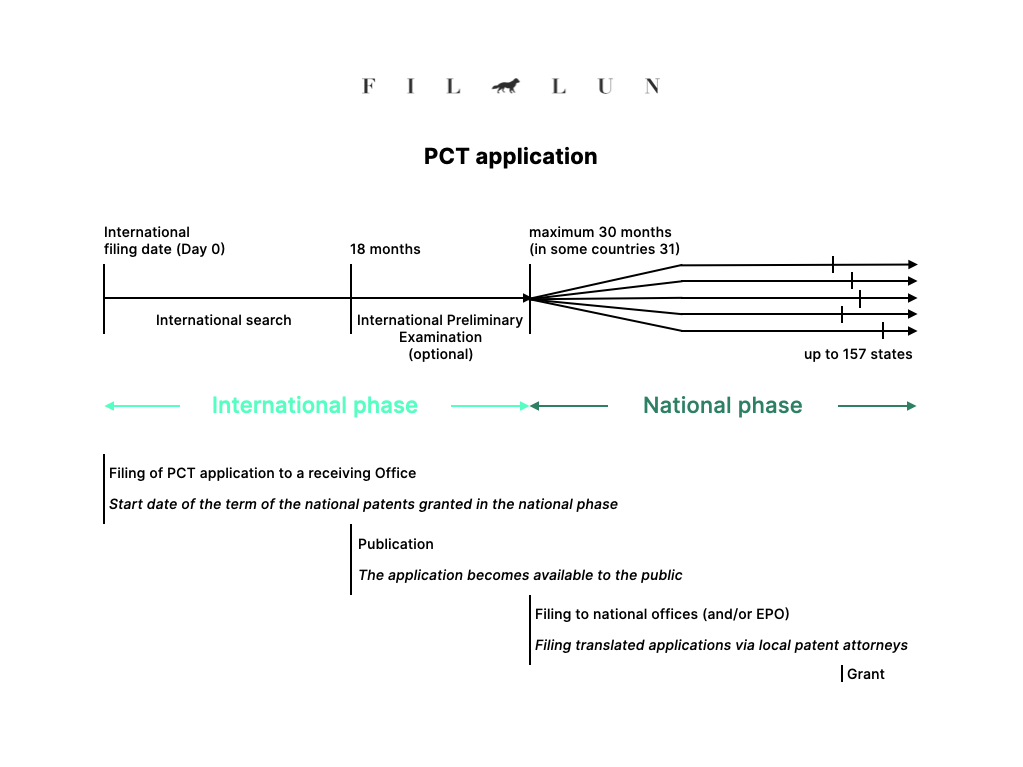The best patent procedure for startups
The best patent procedure for you will be the one that best suits your IP strategy, business plans, budget and goals you intend to reach with your patent portfolio. So, you might say that there is no patent procedure that would suit all companies. However, considering the budget (usually very limited, financial support might only be provided later in the process) and the goals of startups (securing the protection of their products by filing patent applications covering many countries), there is one filing route particularly advantageous for startups: PCT application.
Although there is a separate article dedicated to PCT, the most important features relevant for startups are highlighted below.
Why startups should file a PCT application
As mentioned, startups need a patent application that covers the biggest geographical territory for a limited budget. This is exactly the main benefit of a PCT application. It covers more than 155 countries (see the full list of countries here), and to start the procedure, you only need to file a single application in one language and paying one set of fees.
But let's see in more detail the advantages for startups:
Cost efficiency
Probably the most notable benefit of the PCT is cost efficiency. Of course, there is no free patent application, and a PCT still costs thousands of euros, but patents in general are costly investments. Considering this, the fees of a PCT application offers very good value for money. You can have a patent pending for up to 157 countries by filing a PCT application and paying only one set of fees. (Patent attorney fees will apply as well, but you only need one patent attorney, the other, local patent attorneys should only be instructed 2.5 years later.)
Timing of the payments
Other than the one set of fees payable at filing (and any patent attorney service fees), there are no more fees you have to pay in the international phase, i.e. in the first 2.5 years. All the other costs, such as the translation and filing fees of the national patent offices that would otherwise occur at filing are only payable when starting the national phase. By that point however, you can raise funds several ways: investors, startup accelerators, etc., or generate income by selling your product.
In fact, I have met many startup clients who used PCT application and received funding for the national phase.
Allows you to use the phrase "patent pending"
After filing, you can (and you should) use the expression "patent pending" on your website, in your marketing materials, brochures, or on the product itself as well.
Reassuring investors that protection is secured for a large number of countries
Again, since almost all countries are covered (Taiwan and Argentina are not in the PCT!), you can choose any number of countries in the national phase. By filing a PCT application, your invention is secured in all of the PCT member states. PCT is also called international patent application, and you can use this phrase in your marketing materials as well.
Single filing using one patent attorney
Filing a single PCT application is much simpler and also less expensive than filing 10-20 patent applications within a short period of time. Should you need a US, a Chinese, a Canadian, a Japanese and an Australian patent, you would have to file 5 separate applications using 5 local patent attorneys. At some point in the PCT (2.5 years after filing) you will have to do the same, but not until that time. In the international phase you only have to pay a single patent attorney's services.
Buy more time
One of the most important features of PCT is the first part of the PCT procedure, called "international phase". International phase adds up to 2.5 years to the procedure.
Basically by filing a PCT, you are buying more time. You can file a single application and then decide about the countries (any from the PCT contracting states) at a later stage. So, PCT helps you delay both the decision and the respective fees and translation costs.
In order to decide where you need a patent, you need to know if there is a market for your invention and if so, in which countries. This is an almost impossible task at the time when you are filing your first application. Furthermore, your invention might already generate some income during the international phase that you can use when starting the national phase.
Looking for investors with an official, positive patentability opinion in your hand
During the international phase, you will receive an international search report and a written opinion regarding your invention. These contain important information about the potential patentability of your invention, providing a strong basis for you to make business decisions about how to proceed. If you have a positive patentability opinion, your chances of raising funds for the next steps of the patent procedure are much higher.
Should the first opinion not be positive, there is a possibility in the international phase to amend your application and pay for a preliminary examination. Thus, even if the first report does not look that good, there is an optional step for communicating with the patent office in question and change their opinion.
Now, let’s discuss a different patent application that might be useful for startups.
Why startups may want to file a US provisional application
There is a special patent procedure in the US that is also very useful for startups and applicants with limited budget, called "Provisional application". If the United States are an important territory for your business already in the first years, you should think about filing a provisional application.
Provisional patent application is a special process, which only exists in the US. It is an application pending at the USPTO (United States Patent Office) for a non-extendable period of 12 months. It is not examined and not published. If a nonprovisional patent application is not filed by the end of the 12 months, the provisional application dies and cannot be continued.
Let's see its most important features:
Securing protection in the US
US is undeniably one of the biggest markets and most important territories for startups, so investors will want you to have some protection in the US. (PCT application also works, since that also covers United States, but if you are sure that you need a patent in the US, you can file a provisional application at the same time as filing a PCT.)
However, note that a provisional patent application will not turn into a patent unless you file a nonprovisional patent application within 12 months.
Inexpensive
It is a one-year-long procedure without any examination process. For this reason, its costs are quite low.
However, a professional patent application still needs to be drafted and filed, so patent attorney fees will occur.
Allows you to use the phrase "patent pending"
After filing, you can (and you should) use the expression "patent pending" on your website, in your marketing materials, brochures, or on the product itself as well.
You can claim the priority of a US provisional application
US provisional application can be your first application. You can file any subsequent applications (European patent application or PCT application) claiming the priority of your first filing. Read more about priority here.
So, you can file a provisional and then a few months later a PCT application, and then before the year ends, a US nonprovisional patent application. However, you can only claim priority of the US provisional application if it was well drafted and included all the features of the invention. A not well prepared provisional is a waste of time and money.
For more information on provisional patent applications, read a knowledgable US patent attorney, Gene Quinn's article.
A detail from his article: "It is critical to disclose as much as possible. You only get the benefit of an earlier filing date (the entire purpose and benefit of a provisional filing) if it was disclosed appropriately. So it is best to think of the provisional patent application as a lower cost way of starting your journey toward receiving a patent, but it is incorrect to think of the provisional patent application as a cheap way to start the patent process. The fact that it is lower in cost and doesn’t require formalities doesn’t mean you shouldn’t take it seriously. A poorly prepared provisional patent application offers no benefit whatsoever and can come with significant down side later."
Other forms of IP
Do not forget that patents are just one part of an IP portfolio. You should also plan on registering your trademarks and filing design applications. It is really important to create a personalized IP strategy that suits your business.
Recommended steps for startups
Developing the idea into a concrete product or method - and keeping it secret
Consultation with IP professionals
- Discussing the invention with a patent attorney (whether it is patentable)
- Discussing goals, creating IP strategy (where to file the application)Conducting a prior art search (preferably by the patent attorney, but can be done by the startup as well to save money)
Monitoring the products and patents of your competitors (from now on continuously)
Further developing the invention if needed - based on the results of the search
Finalising the features of the product/steps of the method and creating an invention disclosure document
Not discussing the invention with anyone else (if must, then least people possible and with a signed NDA)
Preparing the patent application documents and claims with the help of a patent attorney
Filing a PCT patent application
Filing design patent - if it is a product with unique appearance
Starting talking to investors, marketing, business negotiations, selling the product - starting generating income from the invention and get funding from investors, startup incubators & accelerators
Filing trademark application for the logo, brand name, etc.
Deciding about the countries where the PCT national phase should be started - based on the results of the first 2.5 years on the market - your patent attorney can assist you in the decision
Filing national applications in the PCT national phase (within 2.5 years of filing the PCT)
Filing more patent applications - if necessary (by repeating the previous steps)
Author: Zsofia Pintz
Published: August 2020
Updated: July 2023

Do you have any questions?
Feel free to contact us if you have any questions, suggestions or to arrange a consultation.
Related articles
PCT (international patent application) timeline
Are you interested to learn more about the most popular patenting process that covers more than 155 countries? Read the article to find out the steps, advantages and disadvantages of the PCT.
How to save money?
Patenting is expensive. However, that does not mean that you cannot set a budget, spend wisely, and, most importantly, be informed about all the possible upcoming fees. Read the article for 7 tips regarding how to save money during a patenting procedure.
Do you need a patent attorney?
Generally, a patent attorney's advice will be helpful when you are planning an effective IP protection strategy, and essential if you decide to apply for a patent. Read the article to find out more.




